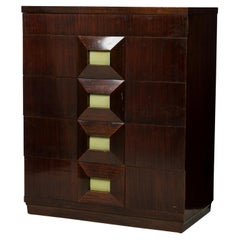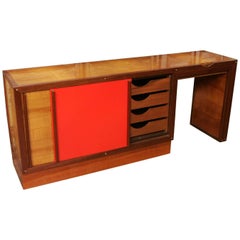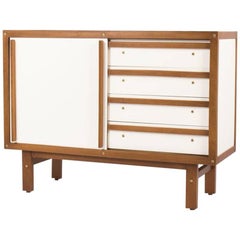Andre Sornay Dresser
Mid-20th Century French Mid-Century Modern Dressers
Leather
Recent Sales
Vintage 1960s French Dressers
Brass
Vintage 1950s French Dressers
Oak
Vintage 1950s French Dressers
Oak
Vintage 1950s French Dressers
Oak
Vintage 1950s French Dressers
Metal, Iron
Vintage 1950s French Mid-Century Modern Buffets
Formica, Mahogany
Vintage 1950s French Dressers
Wood, Lacquer
Vintage 1950s French Dressers
Oak
Vintage 1950s French Dressers
Oak
Vintage 1950s French Wardrobes and Armoires
People Also Browsed
21st Century and Contemporary French Brutalist Night Stands
Oak
21st Century and Contemporary American Mid-Century Modern Flush Mount
Steel, Brass, Gold, Silver
21st Century and Contemporary Swedish Mid-Century Modern Table Lamps
Textile
2010s Austrian Jugendstil Wall Lights and Sconces
Brass
Late 20th Century American Mid-Century Modern Chandeliers and Pendants
Plaster
Vintage 1940s French Art Deco Buffets
Oak
2010s Austrian Jugendstil Chandeliers and Pendants
Silk
Vintage 1920s Dutch Art Deco Cabinets
Macassar, Oak
Vintage 1930s French Art Deco Dining Room Chairs
Oak
Mid-20th Century French Mid-Century Modern End Tables
Glass, Oak
Mid-20th Century French Art Deco Cabinets
Wood
21st Century and Contemporary French Mid-Century Modern Chandeliers and ...
Brass
Vintage 1940s French Art Deco Wardrobes and Armoires
Wood
Vintage 1930s Italian Art Deco Sideboards
Oak
Vintage 1930s French Art Deco Shelves
Oak
Mid-20th Century French Mid-Century Modern Chandeliers and Pendants
Metal
Andre Sornay Dresser For Sale on 1stDibs
How Much is a Andre Sornay Dresser?
Andre Sornay for sale on 1stDibs
Although he is among the least known of the like-minded French Art Deco furniture designers of his era, André Sornay introduced innovative fabrication techniques and a unique decorative style to his modernist seating, case pieces and other creations.
Sornay was born in Lyon in 1902, and graduated from École Nationale Supérieure des Beaux-Arts de Lyon in 1918. His career as a furniture designer began in 1919 when he was appointed head of his family’s furniture company after his father’s death.
In the early 1920s — inspired by the Bauhaus and De Stijl as well as his friends and fellow French avant-garde designers Francis Jourdain and Pierre Chareau — Sornay shifted the company’s focus from manufacturing period reproductions to creating contemporary designs.
Sornay’s work fused tradition with modernism. He preferred to work with metals, exotic woods such as mahogany and rosewood, rubber and Duco lacquer for a range of cabinets, desks, chairs and mirrors. Sornay’s pieces featured sleek brass drawer pulls and sharply geometric lines, and the distinctive mode that he worked in was known throughout Lyon as “Le Style Sornay.”
Sornay was also recognized for his inventive design methods that were not only decorative but functional. In 1932, he patented the cloudage technique — studding the perimeter of veneered furniture panels with uniform brass nails. Sornay integrated this technique into his wardrobes, side tables and the armchairs he designed, which were frequently defined by clean lines and sharp angles. In the early 1950s, he also patented a technique called the “Tigette,” which allowed for quick and easy assembly or disassembly of modular furniture — a forerunner to IKEA’s flat-packed furniture.
While Sornay isn’t as well known as other European modernists like Le Corbusier and Charlotte Perriand, he attracted modest attention at exhibitions of the day, such as the 1923 Salon d’Automne and the 1925 Exposition Internationale des Arts Décoratifs et Industriels Modernes in Paris, the design fair that brought the Art Deco style to the world. He was awarded the bronze medal at Paris’s Exposition Internationale des Arts et Techniques dans la Vie Moderne in 1937.
In the late 1950s, Sornay ceded control of his furniture design company to his children, remaining as an advisor until production ceased in 1999. He died the following year.
On 1stDibs, discover a range of vintage André Sornay case pieces and storage cabinets, seating and tables.
Finding the Right Case Pieces And Storage Cabinets for You
Of all the vintage storage cabinets and antique case pieces that have become popular in modern interiors over the years, dressers, credenzas and cabinets have long been home staples, perfect for routine storage or protection of personal items.
In the mid-19th century, cabinetmakers would mimic styles originating in the Louis XIV, Louis XV and Louis XVI eras for their dressers, bookshelves and other structures, and, later, simpler, streamlined wood designs allowed these “case pieces” or “case goods” — any furnishing that is unupholstered and has some semblance of a storage component — to blend into the background of any interior.
Mid-century modern furniture enthusiasts will cite the tall modular wall units crafted in teak and other sought-after woods of the era by the likes of George Nelson, Poul Cadovius and Finn Juhl. For these highly customizable furnishings, designers of the day delivered an alternative to big, heavy bookcases by considering the use of space — and, in particular, walls — in new and innovative ways. Mid-century modern credenzas, which, long and low, evolved from tables that were built as early as the 14th century in Italy, typically have no legs or very short legs and have grown in popularity as an alluring storage option over time.
Although the name immediately invokes images of clothing, dressers were initially created in Europe for a much different purpose. This furnishing was initially a flat-surfaced, low-profile side table equipped with a few drawers — a common fixture used to dress and prepare meats in English kitchens throughout the Tudor period. The drawers served as perfect utensil storage. It wasn’t until the design made its way to North America that it became enlarged and equipped with enough space to hold clothing and cosmetics. The very history of case pieces is a testament to their versatility and well-earned place in any room.
In the spirit of positioning your case goods center stage, decluttering can now be design-minded.
A contemporary case piece with open shelving and painted wood details can prove functional as a storage unit as easily as it can a room divider. Alternatively, apothecary cabinets are charming case goods similar in size to early dressers or commodes but with uniquely sized shelving and (often numerous) drawers.
Whether you’re seeking a playful sideboard that features colored glass and metal details, an antique Italian hand-carved storage cabinet or a glass-door vitrine to store and show off your collectibles, there are options for you on 1stDibs.


